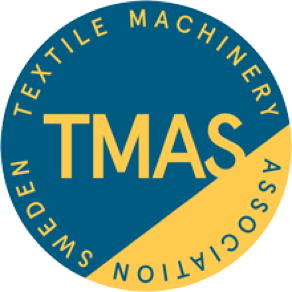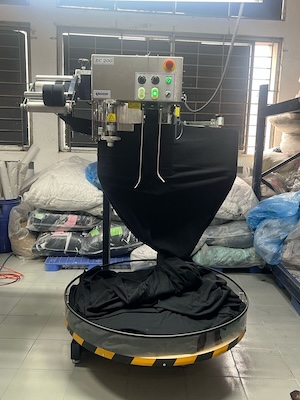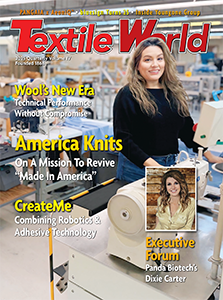 STOCKHOLM, Sweden — June 23, 2025 — Svegea — a member of TMAS, the Swedish textile machinery association — has delivered no less than six of its EC 200 automatic collarette machines to the Bangladesh-based Interstoff Group in the past 12 months.
STOCKHOLM, Sweden — June 23, 2025 — Svegea — a member of TMAS, the Swedish textile machinery association — has delivered no less than six of its EC 200 automatic collarette machines to the Bangladesh-based Interstoff Group in the past 12 months.
Interstoff, which belongs to the Pandughar Group, was founded in 2000 as a modest garment factory with just 62 sewing machines.

Today its three divisions — Interstoff Apparels, Interstoff Clothing and South East Textile — have a combined workforce of over 10,000 people, producing around 72 million fully finished and packaged garments each year.
Recognition
Interstoff is further equipped with the very latest knitting and dyeing and finishing machinery sourced from Europe and Japan to enable a daily production capacity of 30,000 kg of fabrics. Through continuous innovation in yarns and processes, the company’s fabrics consistently earn recognition for their environmental responsibility and quality. Its fabric laboratory is certified by leading brands such as H&M, M&S, Sainsbury’s and Tesco.
Two Svegea collarette machines have now been commissioned at each of the three Interstoff divisions for the high speed production of tubular apparel components such as cuffs, collars and neck tapes.
Interstoff chose the EC 200 machines over the faster EC 300 model primarily because some of its fabrics include seams. The faster crush-cutting knife system in Svegea’s EC 300 series can struggle with multiple fabric layers or seams stitched with polyester thread, since it cuts by pressure rather than slicing. By contrast, the EC 200 uses scissor-action knives — two sharp circular blades with a slight overlap — which function like scissors and handle seams without issue.
The machines run directly from turntables at speeds of up to 40 meters per minute, depending on the fabric width, material properties and optimal settings. They are equipped with Svegea’s standard drive system in an electronic master/slave configuration. Each machine has been specially equipped with a third knife set, enabling the simultaneous cutting of up to three bands. This means that total output in linear meters per minute can be significantly higher when cutting multiple bands in parallel.
Efficiency and fabric savings
“Advances in automation continue to make the specialized, bespoke machines we engineer more efficient,” says Svegea Managing Director Håkan Steene. “We have enjoyed great success in Bangladesh over the past few years, working with our invaluable regional partner Tech Cell, and have established strong relationships with the leading integrated garment manufacturing operations in the country.”
“We have had a strong relationship with Svegea over the years and these machines are now helping us to significantly increase production as well as achieving fabric savings and being able to divert manpower to other areas of production,” adds Interstoff Apparels director Shaikh Mohammad Ilias.
“Many of the world’s leading fashion brands have chosen to establish operations in Bangladesh, drawn to the country’s efficiencies and highly integrated network of rapidly responding suppliers,” says TMAS Secretary General Therese Premler-Andersson. “Hoping to build on this success, the Bangladesh government has now initiated plans to achieve exports of ready-made garment worth $50 billion by as early as this year – and approaching $100 billion by 2030. Members of TMAS have been very active in the region recently, providing the latest tools for automating textile and garment manufacturing processes – driving both sustainability and competitiveness. TMAS members look forward to meeting up with new and existing customers at the forthcoming ITMA Asia exhibition in Singapore this October.”
Svegea will be demonstrating both semi- and fully-automatic cutting machines at ITMA Asia + CITME from October 28-31, at stand D109 in Hall 6.
Posted: June 23, 2025
Source: TMAS, The Swedish Textile Machinery Association




